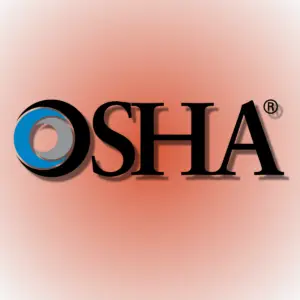The California Occupational Safety and Health Standards Board (Cal/OSHA) established the New Cal/OSHA Permanent COVID-19 Policy, also known as the Emergency Temporary Standards (ETS), as a comprehensive regulation to safeguard workers from COVID-19’s risks. The rule became effective on November 30, 2020, and it will stand until the board repeals it or a permanent norm replaces it.
To reduce the spread of COVID-19 in the workplace, the ETS provides standards for companies to deploy infection control measures, provide personal protective equipment (PPE), and conduct staff training. Additionally, it mandates that employers inform staff members of COVID-19-related policies and procedures, keep track of COVID-19 cases, and report some cases to Cal/OSHA.
All employers in California are subject to the ETS, as are all employees, including those who work remotely and those who are temporary employees. Regardless of the size of the company or the number of employees, employers are expected to take action to protect their staff from COVID-19 and must adhere to the ETS’s criteria. Additionally, employers must abide by additional laws relevant to their employment, such as OSHA rules or laws that are unique to a certain sector of the economy.
Goal of the Regulation
The Cal/OSHA ETS mandates that employers undertake infection prevention and control measures in the workplace in order to safeguard workers against COVID-19. All workplaces in California, whether indoor or outdoor, must comply with the rule. Employers must create a thorough infection control plan, give employees personal protective equipment (PPE), and educate staff members about the health and safety risks associated with COVID-19.
Infection Prevention and Control Program
Employers must create a thorough infection prevention and control program that incorporates the following components in accordance with the Cal/OSHA ETS.
-
Identifying and evaluating COVID-19 workplace hazards
-
Engineering and administrative measures are put in place in order to get rid of or lessen identified risks.
-
Adoption of cleaning and sanitizing practices for the workplace
-
implementation of measures for detecting and isolating workers who have COVID-19 symptoms or have been exposed to the virus
-
Implementation of methods for monitoring compliance with the infection prevention and control program
The development and implementation of the infection prevention and control program must also involve consultation with the employees or employee representatives, according to the law.
Personal Protective Equipment
Employers are required by the Cal/OSHA ETS to provide personal protective equipment (PPE) to employees who run the risk of contracting COVID-19. The specific hazards present in the workplace and the degree of exposure risk will determine the type of PPE needed. According to the law, companies must give employees any essential face shields, gloves, goggles or face shields, gowns or aprons, and respirators free of charge. Additionally, employers must ensure that the PPE is suitable for the particular job and that it correctly fits the employee.
Training
Employers are required by the Cal/OSHA ETS to train employees about COVID-19 health and safety risks and the infection prevention and control procedures at work. This instruction must be given in a language that the workers can comprehend and must cover how to correctly use, store, and discard PPE and identify COVID-19 symptoms and report exposure to the virus. Additionally, employers are required to offer instructions on how to properly clean and disinfect the workplace.
Enforcement and Penalties
The ETS will be enforced by Cal/OSHA through inspections and investigations in response to complaints, referrals, and high-hazard businesses. Employers who are found to be in breach of the law may face penalties and fines, as well as directives to stop the infraction and make the required adjustments to safeguard employees.
Compliance Timeline
Employers must comply with the regulation as soon as possible, but no later than eight calendar days after the Cal/OSHA ETS took effect on November 30, 2020. By December 31, 2020, employers must confirm that they are in conformity with the rule. In order to safeguard their employees from COVID-19, employers must move promptly to comply with the new legislation, as they only have a limited amount of time to do so.
Employer Notification and Record-Keeping
Employers are required by the Cal/OSHA ETS to inform workers of the infection prevention and control procedures in place at the workplace and to keep track of their compliance with the law. There are records of employee COVID-19 instances, training, and PPE given, among other things. Additionally, employers are required to publish a notice of the regulation in a conspicuous area of the workplace so that employees can quickly see it. The requirement to maintain compliance records is essential because it enables Cal/OSHA to assess whether employers are in compliance with the rule and, if required, to take enforcement action.
Employee Rights and Protections
Employees are protected from retaliation by Cal/OSHA ETS provisions when they file complaints or voice concerns about COVID-19. If an employee thinks their employer is not abiding by the law, they have the right to ask Cal/OSHA to conduct an inspection. Additionally, they are free to report any disease or exposure linked to COVID-19 without worrying about repercussions. These safeguards make sure that workers may express their opinions without worrying about losing their jobs, which is crucial for sustaining a safe and healthy work environment.
Interaction with Other Regulations
The OSHA Bloodborne Pathogens standard and other laws that safeguard workers from risks are not intended to be replaced or superseded by the Cal/OSHA ETS. The Cal/OSHA ETS contains particular requirements for how it interacts with other regulations, and employers are required to adhere to all applicable regulations. This means that businesses are required to abide by the ETS and any other rules relevant to their workplace, such as OSHA standards or regulations particular to a given industry. Maintaining compliance may need more planning and money, but it is crucial to safeguard employees from any potential risks.
Impact on Small Businesses:
Small firms may experience particular difficulties adhering to the Cal/OSHA ETS. They might be unable to afford the PPE, and other measures mandated by the rule and have fewer resources to spend to comply. Small firms must realize the necessity of ETS compliance to safeguard their employees’ health and safety, nevertheless. California has made information and guidelines available to assist small businesses in adhering to the law.
Impact on High-Risk Industries
Businesses in the healthcare, retail, and food service sectors may be more susceptible to COVID-19 transmission. In order to safeguard workers from the virus, the Cal/OSHA ETS imposes additional regulations on these high-risk businesses. Employers in these sectors must take special measures to reduce the danger of transmission, like giving N95 respirators to staff members who interact closely with consumers.
Impact on Remote Workers
Employers have to modify their infection prevention and control procedures in response to the increase in remote labor during the COVID-19 pandemic in order to safeguard remote workers. The Cal/OSHA ETS contains provisions for remote work, such as the mandate that employers train remote workers about COVID-19 health and safety concerns and provide PPE to them. To safeguard remote employees from the virus, employers must make sure they have access to the same knowledge and tools as onsite personnel.
Impact on Multi-State Employers
Employers who operate in different states could encounter more difficulties adhering to the Cal/OSHA ETS. They must traverse the various rules and specifications for each state where they conduct business and ensure they comply with all of them. Employers operating in multiple states must also be aware of differences in the laws, such as distinct PPE requirements, and adjust their compliance efforts accordingly.
Compliance Assistance
The state of California has made a number of tools and services available to help employers adhere to the Cal/OSHA ETS. These consist of instructions, educational materials, and a website offering compliance support. Employers can also get guidance from Cal/OSHA directly to understand and follow the rule. Employers who are having trouble complying with the ETS may find compliance assistance helpful because it may give them the knowledge and direction they require to safeguard their employees from COVID-19.
Future Considerations
The COVID-19 issue could cause changes to the Cal/OSHA ETS, which is a temporary regulation. Employers must be aware of any updates or modifications to the regulation and modify their compliance efforts as necessary. Additionally, businesses must review and update their infection prevention and control policies to reflect the most recent recommendations when new knowledge about the virus and its transmission becomes available. It’s critical to be updated about the pandemic scenario and make any necessary modifications.
Salute
Salute | EHS (salutesafety.com) website offers a range of safety compliance and training programs for many industries, including manufacturing, healthcare, and construction. These initiatives aim to educate workers on safe work practices and assist companies in adhering to safety laws like OSHA standards. The website provides courses in OSHA compliance, safety leadership, and hazard communication, among other things.
Additionally, they have specialized training programs for COVID-19-related topics, including COVID-19 infection prevention, COVID-19 employer and employee guidelines from OSHA, and COVID-19 vaccine instruction.
Because the pandemic is still continuing strong, it’s critical for businesses to stay up to date on the most recent recommendations and rules for safeguarding their employees against the virus. Employers may find these programs to be a beneficial source of knowledge and tools for complying with the Cal/OSHA Permanent COVID-19 Regulation and other safety laws.
What they offer:
-
Offering online training on the Cal/OSHA ETS, with information on infection control, PPE, and employee rights and protections.
-
Providing consulting services to assist businesses in creating and implementing infection prevention plans that adhere to the Cal/OSHA ETS.
-
Giving advice and assistance to employers so they can adhere to the ETS’s record-keeping and notification requirements.
-
Providing on-site evaluations to discover and analyze occupational dangers and offer suggestions for ETS compliance
-
Providing specialized training programs based on the needs of the employer and the sector to ensure adherence to the Cal/OSHA ETS
It’s crucial to remember that the website might offer more specialized services pertaining to the Cal/OSHA Permanent COVID-19 Regulation.
FAQs
-
What is the New Cal/OSHA Permanent COVID-19 Regulation?
Ans: The California Occupational Safety and Health Standards Board (Cal/OSHA) established the New Cal/OSHA Permanent COVID-19 Policy, also known as the Temporary Emergency Standards (ETS), as a complete regulation to safeguard workers in the state from COVID-19’s risks.
-
Who is covered by the regulation?
Ans: The law is applicable to all California employers and all employees, including those who work remotely and those who are temporary employees.
-
What are the requirements of the regulation?
Ans: To reduce the spread of COVID-19 in the workplace, the ETS provides standards for companies to deploy infection control measures, provide personal protective equipment (PPE), and conduct staff training. Additionally, it mandates that employers inform staff members of COVID-19-related policies and procedures, keep track of COVID-19 cases, and report some cases to Cal/OSHA.
-
How does the regulation interact with other regulations?
Ans: Employers are required to abide by the ETS as well as any additional rules that may be relevant to their workplace, such as OSHA requirements or rules particular to a given industry. To ensure compliance, more planning and resources could be needed.
-
What happens if an employer doesn’t comply with the regulation?
Ans: Cal/OSHA has the authority to enforce the ETS, and an employer who disobeys the law may face fines and penalties. Employers who violate the law may potentially face legal action from both employees and other parties. Additionally, breaking the law puts workers at risk of getting COVID-19 and could create a hazardous or unhealthy work environment.
Conclusion
A key law called the Cal/OSHA ETS was created to safeguard California workers from the dangers of COVID-19. Employers can seek advice from compliance specialists or safety consultants who can help them through the regulation and ensure that they are in compliance.
Additionally, Cal/OSHA offers a number of tools and resources, including instructions, training materials, and a compliance aid website, to help employers comply with the ETS.
Employers can also get guidance from Cal/OSHA directly to understand and follow the rule. Employers can assist in protecting their employees from the risks associated with COVID-19 and ensuring a safe and healthy workplace for all by taking the appropriate actions to comply with the ETS.
It’s crucial to remember that the ETS must be followed; failure to do so may result in penalties, fines, and legal action. As this regulation is transitory and open to change, employers should also stay informed of any revisions.

















